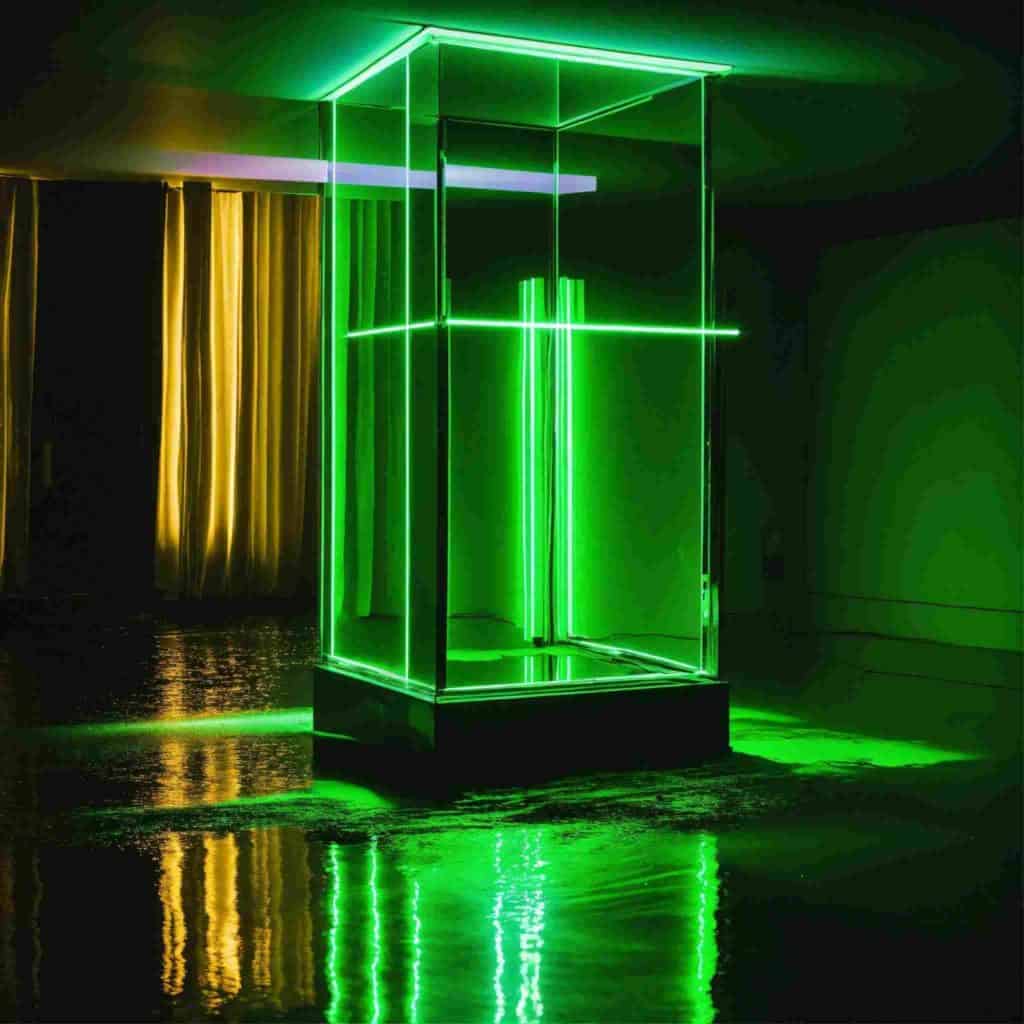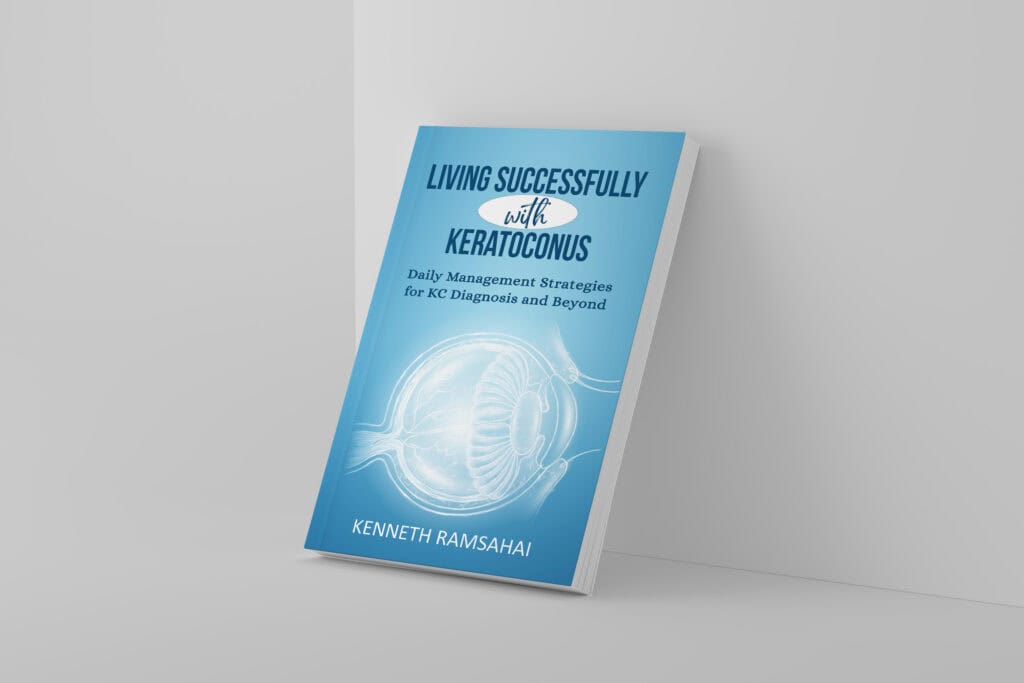Assumptions and Context
This blog post entitled Challenges of Living with Keratoconus assumes the reader has been diagnosed and has received vision restoration treatment in the form of specialty lenses for keratoconus.
It’s essential to understand this context as it shapes the narrative and advice provided.
Understanding Keratoconus and Vision Restoration
Dealing with the challenges of living with keratoconus? You’re not alone! Many of us have walked the path of diagnosis and have sought ways to restore our vision. Let’s dive into what this journey looks like and how specialty lenses can be a beacon of hope.
The First Step: Accepting the Diagnosis
Being diagnosed with keratoconus can be overwhelming. But remember, it’s just the start of a journey towards better vision. With the right information and support, you can navigate this path confidently.
The Magic of Scleral Lenses
Ever heard of scleral lenses? These are the superheroes of the lens world for many with keratoconus! Covering a larger portion of the eye, they offer comfort and clarity.
Many, including myself, have found them to be life-changing. They’re not just lenses; they’re a ticket to a clearer world.
Embracing the Unpredictability of Keratoconus
Life with keratoconus is a bit like a roller coaster – full of ups, downs, and unexpected turns. But with the right mindset and tools, we can ride it with grace and resilience.
The Lens Dilemma: When Chaos Strikes
Imagine starting your day, and as you’re inserting or removing your lenses, one breaks or gets lost. Panic sets in. For many of us, these lenses are our lifeline to the world. Without them, daily tasks become monumental challenges.
Missing work, canceling plans, and the looming cost of replacement lenses can add to the stress. But remember, you’re not alone in this. Many in the keratoconus community have faced similar hurdles and come out stronger.
Financial and Time Considerations
Lenses aren’t just about vision; they’re an investment. When unexpected incidents occur, questions arise: Can I afford a replacement right now?
How long will it take to get a new pair? It’s essential to plan ahead, have a backup, and know your options. With a bit of foresight, these bumps in the road become manageable.
Navigating Personal Life with Keratoconus
Keratoconus doesn’t just affect our eyes; it touches every aspect of our lives, from our daily routines to our personal relationships.
The Adolescent Onset: Growing Up and Facing the Challenges of Living with Keratoconus
For many, keratoconus makes its presence known during the tumultuous years of adolescence or young adulthood. It’s a time of self-discovery, and adding vision challenges to the mix can be tough.
How long can we comfortably wear our lenses? It varies. For instance, due to my corneal transplant, I limit my lens-wearing to a maximum of 13 hours, preferring a comfortable 10.
Yet, some can go up to 16 hours or more. It’s crucial to listen to your body and understand your unique limits.
Planning Ahead: The Key to Living with the Challenges of Keratoconus
Ever thought about a spontaneous trip and then remembered your keratoconus? Whether it’s a road trip or a flight, planning becomes second nature.
If flying, consider the flight duration. Can you keep your lenses in for the entire journey? And if there’s a layover, always have a lens kit handy.
A pro tip? If you have a short flight and decide to leave your lenses in during the flight, never fall asleep with your lenses in during a flight. If you do it once, you’ll never do it again. Trust me.

Debunking Myths: Glasses Aren’t Always the Answer
We’ve all heard it before: “Why not just wear glasses?” For many with keratoconus, glasses might offer limited help, if any. This is why it’s vital to arm ourselves with knowledge about our condition.
Being able to explain keratoconus confidently helps in setting the record straight and advocating for our needs.
Building Relationships: The Keratoconus Way
When it comes to personal relationships, keratoconus adds another layer to the mix. From dating to explaining our condition to friends, it’s a journey of understanding and patience.
Dating with Keratoconus: Finding Understanding
Entering the dating world with keratoconus can feel daunting. After a long day, how do we balance the desire to socialize with the need to rest our eyes? For some, like me, the answer lies in setting boundaries.
If my eyes are tired, I prioritize their health, even if it means rescheduling activities. Honesty is key. By being open about our condition, we pave the way for understanding and support.
Educating Loved Ones: Beyond the Basics
It’s not just about explaining what keratoconus is; it’s about helping loved ones understand its daily impact. Why can’t we just switch to glasses?
Why do we need to take lens breaks? By sharing our experiences and challenges, we foster empathy and deepen our connections.
Empowerment Through Knowledge and Boundaries
Living with keratoconus is more than just managing a vision condition; it’s about empowering ourselves through knowledge, understanding, and setting clear boundaries.
The Power of Full Disclosure
Being open about our condition isn’t just about informing others; it’s about empowerment. When we can articulate our challenges and needs, we take control of our narrative.
The Art of Saying No
Boundaries are essential, especially when our well-being is at stake. If an activity or situation poses a risk to our eye health, it’s okay to decline.
For me, It’s not about being restrictive; it’s about ensuring I can continue to enjoy life without compromising my cornea health.
Key Takeaways
- Diagnosis and Acceptance: Being diagnosed with keratoconus is the start of a journey towards better vision. Acceptance and education are crucial first steps.
- Scleral Lenses: These specialty lenses can be transformative for many with keratoconus, offering comfort and clarity.
- Unpredictability: Living with keratoconus means embracing unpredictability, from lens mishaps to financial considerations.
- Personal Life Challenges: Keratoconus affects personal relationships, daily routines, and even activities like dating and traveling.
- Planning Ahead: Whether it’s a trip or a night out, planning becomes essential to ensure eye comfort and health.
- Educating Others: Debunking myths and explaining the condition helps in building understanding and support.
- Empowerment: Being open about keratoconus, setting boundaries, and prioritizing eye health are key to empowerment.
- Assumptions: This blog post assumes readers have been diagnosed and have undergone vision restoration treatment with specialty lenses.
Summary
Living with keratoconus presents a myriad of challenges, from managing the physical aspects of the condition to navigating personal relationships and daily activities.
Specialty lenses, especially scleral lenses, have emerged as a beacon of hope, offering transformative vision restoration.
Open communication, education, and setting clear boundaries are essential in building understanding and support in our personal and social lives.
By empowering ourselves with knowledge and understanding our unique needs, we can lead fulfilling lives while managing the challenges of keratoconus.
If you or someone you know is experiencing vision problems, visit a qualified professional immediately. Your vision is precious, and early intervention can make all the difference.
Very Proud To Announce
Want to see what’s inside? Click the book cover, which is also available in audiobook format, to read a free sample on Amazon.
Discover how the “Clear Vision Window” concept can transform how you manage life with keratoconus.
If you find the sample valuable, please consider purchasing the complete book.
Your purchase supports the keratoconus community while giving you access to all the practical strategies I’ve developed over three decades.
If you do purchase, I’d appreciate an honest review—it helps others with keratoconus find this resource.

Discover More About Keratoconus
Don’t stop your journey here! For more in-depth information and the latest research on living with keratoconus.
Dive into a world of knowledge and resources that can empower you in managing keratoconus effectively. Your vision for a clearer future starts with one click.